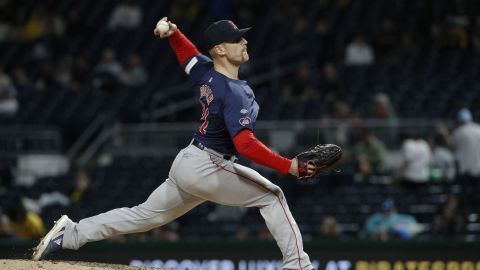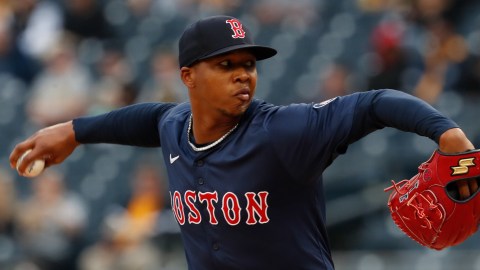Red Sox manager Terry Francona is expecting Boston to be a lot less station-to-station on the bases in 2010.
Imports Adrian Beltre, Mike Cameron and Marco Scutaro will join forces with Jacoby Ellsbury, Dustin Pedroia and J.D. Drew to have at least five strong base runners in the lineup every day — not to mention Bill Hall in reserve.
This is welcome news to Francona, who told ESPN.com that the Red Sox "were atrocious" in terms of baserunning efficiency in 2004, his first year as manager.
"I think we've actually been better in the last couple of years [in terms of baserunning efficiency]," Francona told Comcast SportsNet New England. "We're more athletic than we used to be, which should lead us to go first to third better and score on [more] hits.
"In situations where we have guys on base who can run, we can certainly put them in more motion more."
Baserunning efficiency doesn't just include going from first to third on a single, but scoring from second base on a single or just swiping a bag. Fans may remember Ellsbury going second to home on a wild pitch. With an offense that figures to send less balls over the fence than previous iterations, the Red Sox will have to rely on their legs more.
There is a statistic used to measured such efficiency, developed by Baseball Prospectus and called Equivalent Base Running Runs (EqBRR).
EqBRR factors in another BP statistic called Equivalent Stolen Base Runs (EqSBR) that measures not only the number of stolen bases, but the quality of stolen bases. After all, Dave Roberts' steal that nabbed Boston a World Series back in 2004 is far more important than a stolen base by Ellsbury in the sixth inning of a blowout.
EqSBR is paired along with four other statistics dealing with advancements made on ground balls, balls in the air, hits and "other" — such as moving up on wild pitches — to create EqBRR.
What follows is a list of Boston's EqBRR from 2004 to 2009, along with the place among overall teams (remember, there are 30) and the No. 1 team's EqBRR in parenthesis, followed by said team in question.
2004: -23.9, 30th. (11.4, Cardinals — the best baserunning team lost to the worst in the World Series, go figure.)
2005: -10.5, 22nd. (14.8, Mets.)
2006: -7.5, 20th. (14.4, Angels.)
2007: 0.1, 12th. (13.3, Phillies.)
2008: -6.9, 21st. (17.9, Mets.)
2009: -0.2, 12th. (12.5, Athletics.)
Let's look at individual players. Starting with Beltre, how much better was he as a base runner than Mike Lowell? In 2009, Beltre had a 1.5 EqBRR, placing 93rd of 846. Lowell was at -2.7, good for 800th.
How about Cameron, essentially taking over for Jason Bay? Cameron ranked 301st with a 0.1 mark, while Bay was at 1.2. Doesn't sound like much of an improvement, but Cameron's EqBRR was at 4.0 as recently as 2007. Also, Cameron is more agile than Bay, giving the new Sox center fielder an advantage on the bases.
Bay's lead in this particular category is on the strength of his 13 stolen bases in 2009, while Cameron stole just seven — a marked departure from his average of 24 since 1997. Cameron replacing Bay also has the added benefit of boosting Ellsbury's baserunning efficiency. Ellsbury's No. 7 mark of 5.4 figures to improve now that he's playing the less demanding position of left field.
Lastly, Marco Scutaro was 35th with a 2.9 mark. Jed Lowrie was at -0.2, Julio Lugo at -0.3 and Alex Gonzalez at -1.4. (Bill Hall was 125th with a clean 1.0 mark.)
If you swapped in the new players for the old and ran the 2009 numbers, Boston would be a top-five team when it came to taking advantage of opportunities on the bases.
In a year all about pitching and defense, Boston's base runners will be asked to score a bunch of their runs on the bases, and the team is well-positioned to do just that.



